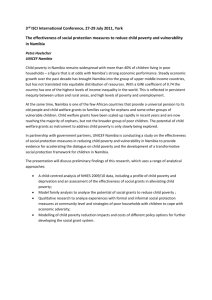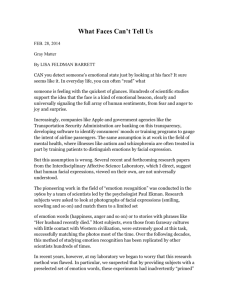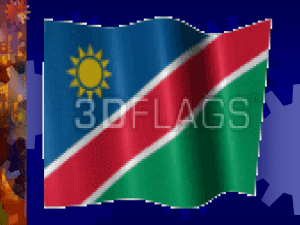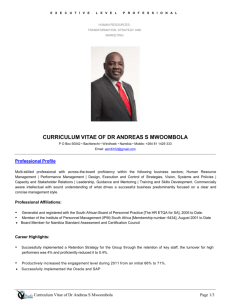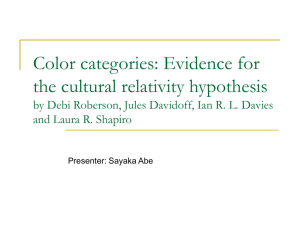March 22nd, 2013
advertisement
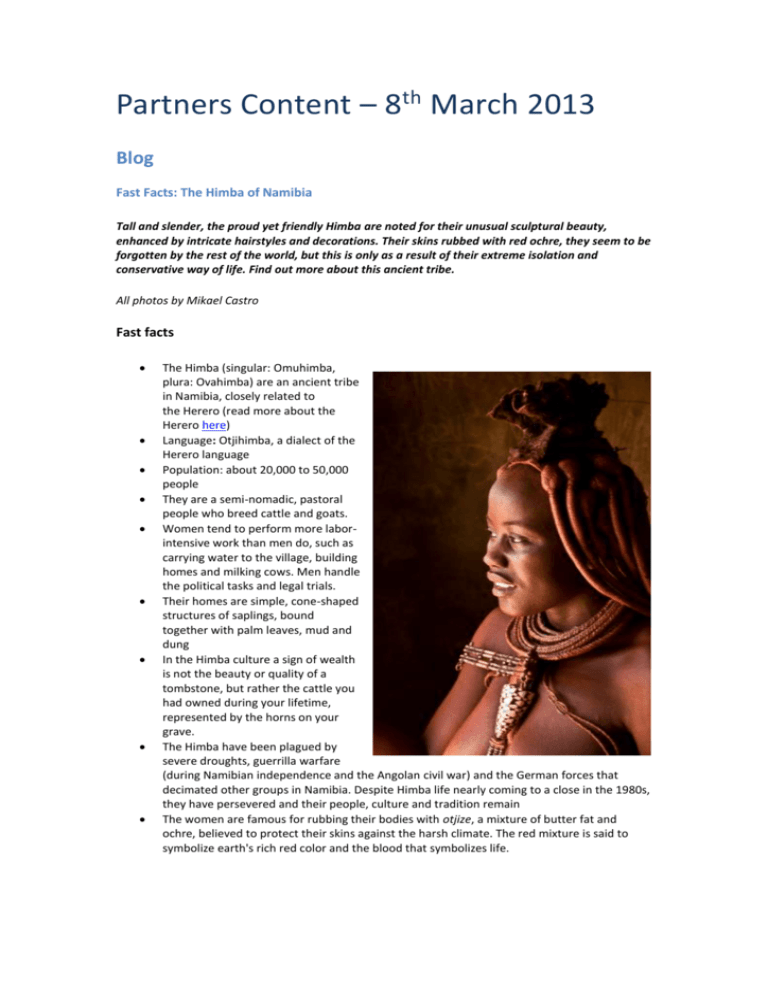
Partners Content – 8th March 2013 Blog Fast Facts: The Himba of Namibia Tall and slender, the proud yet friendly Himba are noted for their unusual sculptural beauty, enhanced by intricate hairstyles and decorations. Their skins rubbed with red ochre, they seem to be forgotten by the rest of the world, but this is only as a result of their extreme isolation and conservative way of life. Find out more about this ancient tribe. All photos by Mikael Castro Fast facts The Himba (singular: Omuhimba, plura: Ovahimba) are an ancient tribe in Namibia, closely related to the Herero (read more about the Herero here) Language: Otjihimba, a dialect of the Herero language Population: about 20,000 to 50,000 people They are a semi-nomadic, pastoral people who breed cattle and goats. Women tend to perform more laborintensive work than men do, such as carrying water to the village, building homes and milking cows. Men handle the political tasks and legal trials. Their homes are simple, cone-shaped structures of saplings, bound together with palm leaves, mud and dung In the Himba culture a sign of wealth is not the beauty or quality of a tombstone, but rather the cattle you had owned during your lifetime, represented by the horns on your grave. The Himba have been plagued by severe droughts, guerrilla warfare (during Namibian independence and the Angolan civil war) and the German forces that decimated other groups in Namibia. Despite Himba life nearly coming to a close in the 1980s, they have persevered and their people, culture and tradition remain The women are famous for rubbing their bodies with otjize, a mixture of butter fat and ochre, believed to protect their skins against the harsh climate. The red mixture is said to symbolize earth's rich red color and the blood that symbolizes life. Photo by Mikael Castro Religion and beliefs The Himba worship their ancestors and the god Mukuru. Often, because Mukuru is busy in a distant realm, the ancestors act as Mukuru's representatives. Their homes surround an okuruwo (ancestral fire) and their livestock, both closely tied to their belief in ancestor worship. The fire represents ancestral protection and the livestock allows for proper relations between human and ancestor. Each family has its own ancestral fire, which is kept by the fire-keeper, who attends to the ancestral fire every seven to eight days in order to communicate with Mukuru and the ancestors on behalf of the family. Photo by Mikael Castro Hairstyles of the Himba Hairstyles indicate age and social status. A young girl typically has two plaits (ozondato) of braided hair, the form being determined by the oruzo membership (patrilineal descent group). Just before puberty, the girls wear long plaitlets worn loose around the head – it can take on various forms and sometimes wigs are worn over it. When the girls have completed their puberty ceremony, the so-called ekori festival takes place and she receives the ekori headdress made from tanned sheep’s or goatskin with three leaf-shaped points, often decorated with iron beads. Girls belonging to some groups have their hair shaved off except for a small bush on top of the head. The shaved-off hair is then used to make plaits, which are woven into the remaining hair and hang down over the face. When she has been married for about a year or has had a child, the ekori head-dress is replaced by the erembe headdress made from the skin of a goat’s head and fastened under the hair at the back of the head by two thongs. From then on the ekori is worn only during ceremonial occasions. Himba males also wear different hairstyles, such as the single plait, the ondato, worn by young boys down the back of the head, two plaits, ozondato, worn by Himba men of marriageable age and the ombwiya headdress, a scarf made from fabric covering the hair and decorated with an ornamental band. Traditional Jewelry The Himba still adorn themselves with traditional jewelry according to ancient customs. Both men and women wear large numbers of necklaces, arm bracelets, sometimes almost like sleeves, made from ostrich eggshell beads, grass, cloth and copper and weighing as much as 40 kg, as well as bracelets around the legs. Iron oxide powder with its shiny effect is worn as a cosmetic like western glitter. Adult women wear beaded anklets, aparently to protect their legs from venomous animal bites The large white shell worn on the breast by Himba (as well as Owambo and Herero women) is called the ohumba. Photo by Mikael Castro Some other useful links and information about the Himba Read about the tradition and development of a Himba funeral here on Travel News Namibia Tired of being filmed by the cameras of the world, and often being misrepresented, twenty OvaHimba people of Namibia decided to step behind and in front of the camera to make a film about themselves: The Himbas are Shooting! Read more about it here. Watch the trailor on Facebook here. If you want to visit the Himba find out where they are and how to organise a visit here Text has been sourced from Namibia Tourism, Wikipedia and Travel News Namibia Facebook Find out how you can visit the fascinating Himba people of Namibia: http://bit.ly/WxZRnX Photo by Mikael Castro ______________________________________________________________ Wheels, wings and walking shoes – whether you’re after the fastest route or the most adventure, find out the best way to get around Namibia here: http://bit.ly/16IWhdA Photo by Paul van Schalkwyk ______________________________________________________________ This March marks 23 years of Namibian Independence Photo via Travel News Namibia ______________________________________________________________ Is it a feathered umbrella? Or a black stork on the hunt in the marshes of Mamili National Park? Photo by Pompie Burger ______________________________________________________________ Imagine cartwheeling down the dunes at 300kmph or 185mph! That’s just how the Golden Wheel Spider of the Namib Desert escapes his predators Watch it here: http://bit.ly/ZZWaVE Photo by Joh Henschel ______________________________________________________________ Did you know rhinos can run up to 30 – 40 miles per hour? It might not sound like much, but even Usain Bolt could only keep pace with a charging rhino for a matter of seconds before being overtaken! ______________________________________________________________ Twitter "I never want to leave" BBC Broadcaster @ChrisGPackham on #Namibia http://ow.ly/iZFlk Want a holiday that gives back? Help cheetahs, elephants, communities & more - #Volunteer in #Namibia #Africa http://bit.ly/XchB4j The Italians call it Il Mal d'Africa ... http://bit.ly/Y4qVKB The handsome Dune Lark of Namibia http://fb.me/OUNIjLYz via @novataxa #Birding #Africa RT @MP_boarder Namib desert. "The land of nothingness" Take. Me. Back. pic.twitter.com/5YMo2vKqw2 Thirsty Namib desert beetles inspire a self-filling water bottle by @NBDnano http://tmblr.co/ZvQQWygVhibS #biomimicry #startup In search of the Himba people of Namibia? Find them here http://bit.ly/WxZRnX #culture Find out why Himba women are painted red & how to visit this ancient tribe here http://bit.ly/WxZRnX #Namibia Its not the size of your tombstone but the no. of cattle horns on your grave. Learn about Himba #culture http://bit.ly/WysLEq #Namiibia More mind-blowing landscape photography from @Squiver http://ow.ly/jct7e via @weatherchannel Tokoloshe traps & black roses by Namibian artist @imkerust http://ow.ly/jcB4P Wheels, wings and walking shoes - find out how to get around Namibia here: http://bit.ly/16IWhdA Welcome to the land of the Himba, where a hairstyle reveals your age & social status... Learn more http://bit.ly/WysLEq #Namiibia #culture Let the words take you into another world: 5 must-read books about Namibia http://ow.ly/jf9P9 #weekendreading #africa The ultimate #adventure: #mountainbiking through the Namib http://bit.ly/16IWhdA http://ow.ly/i/1IMLr



